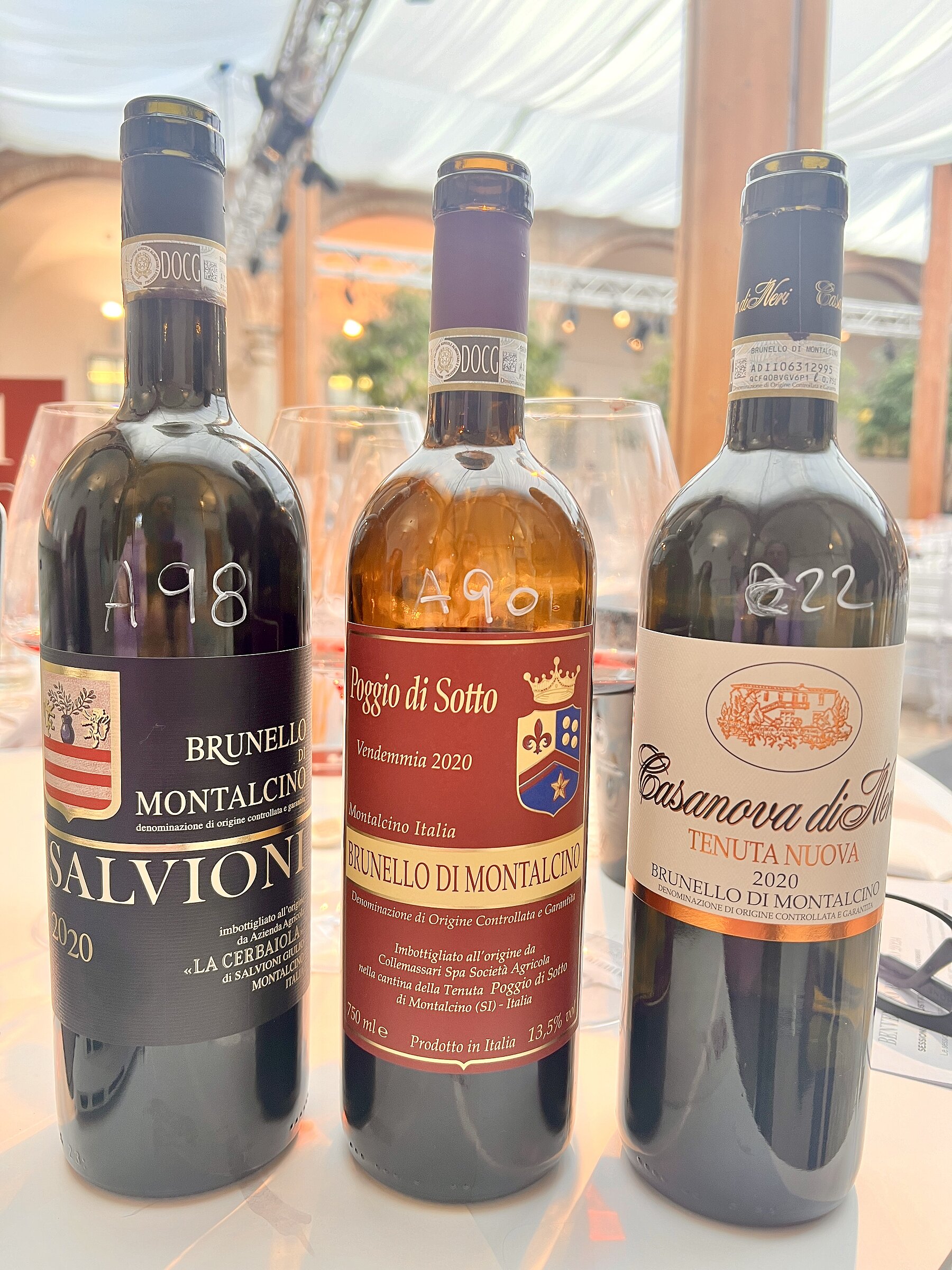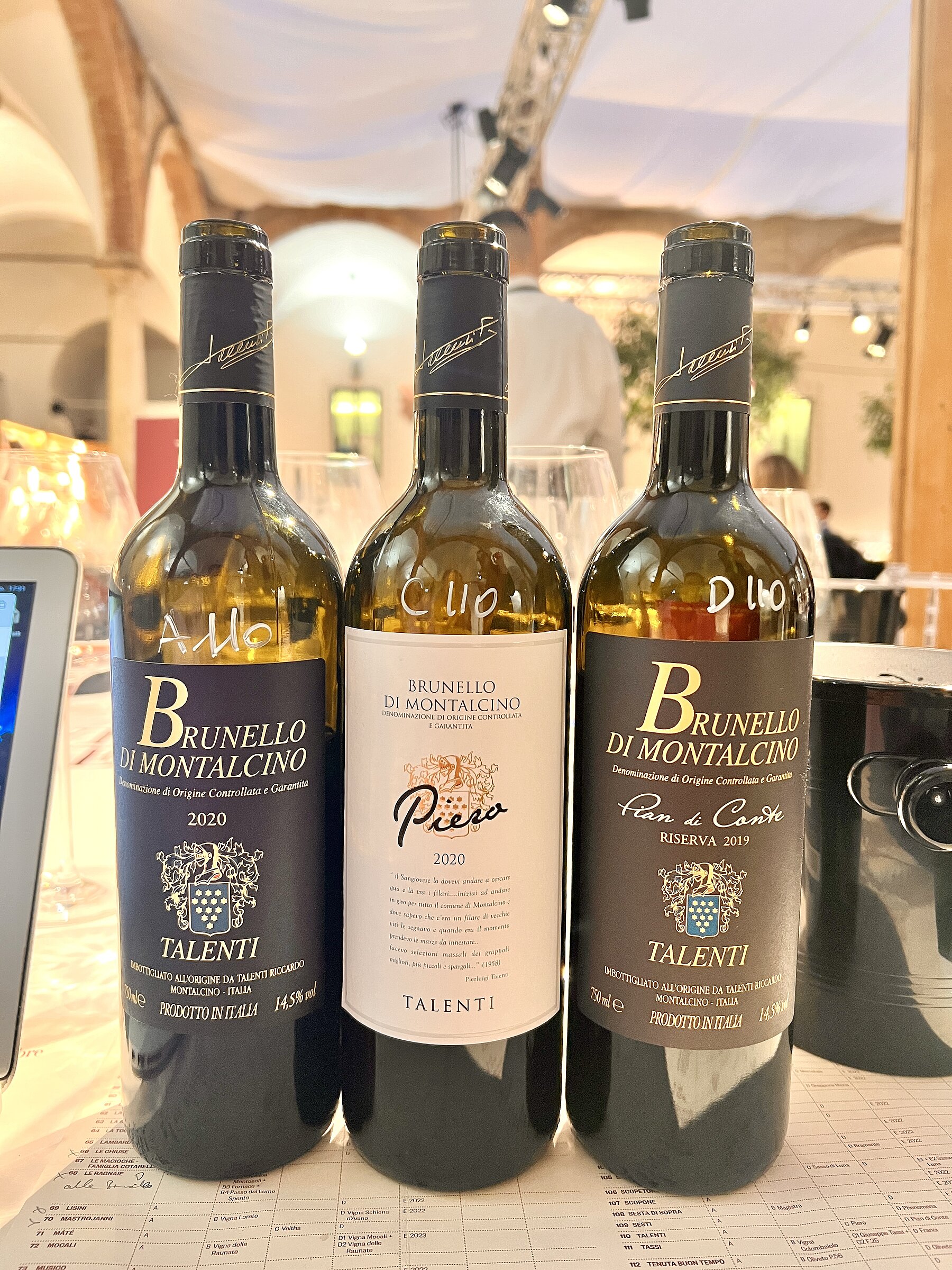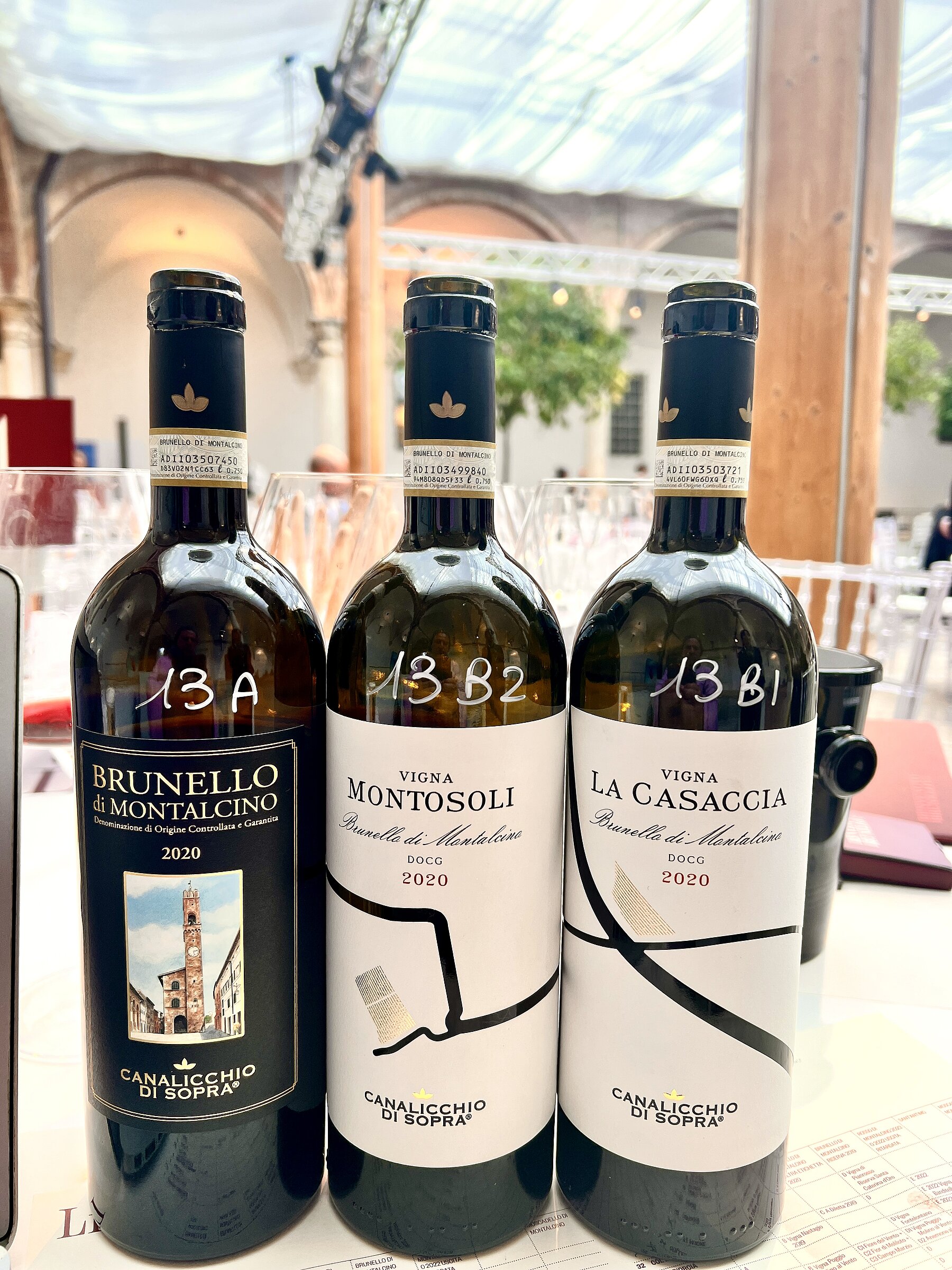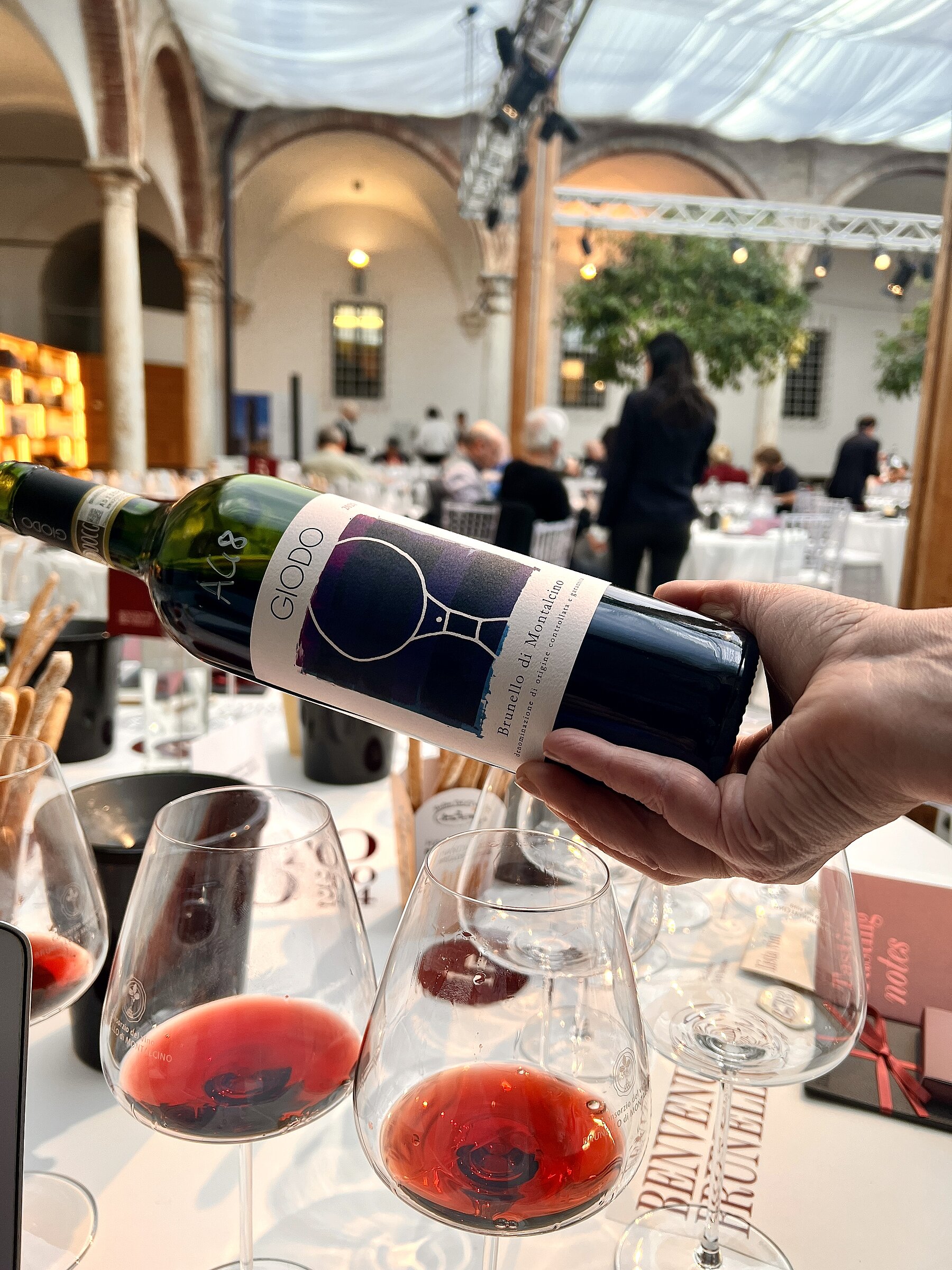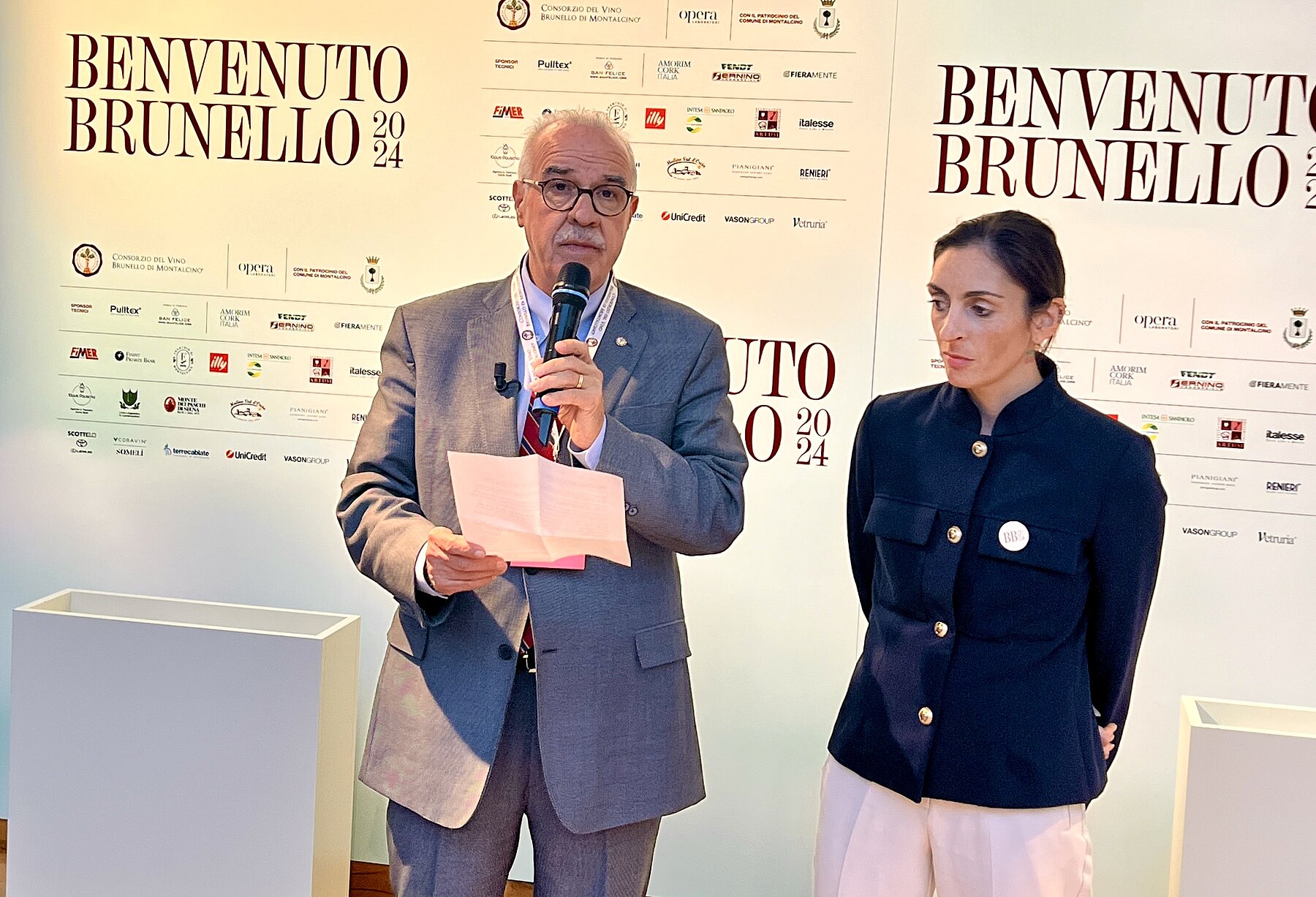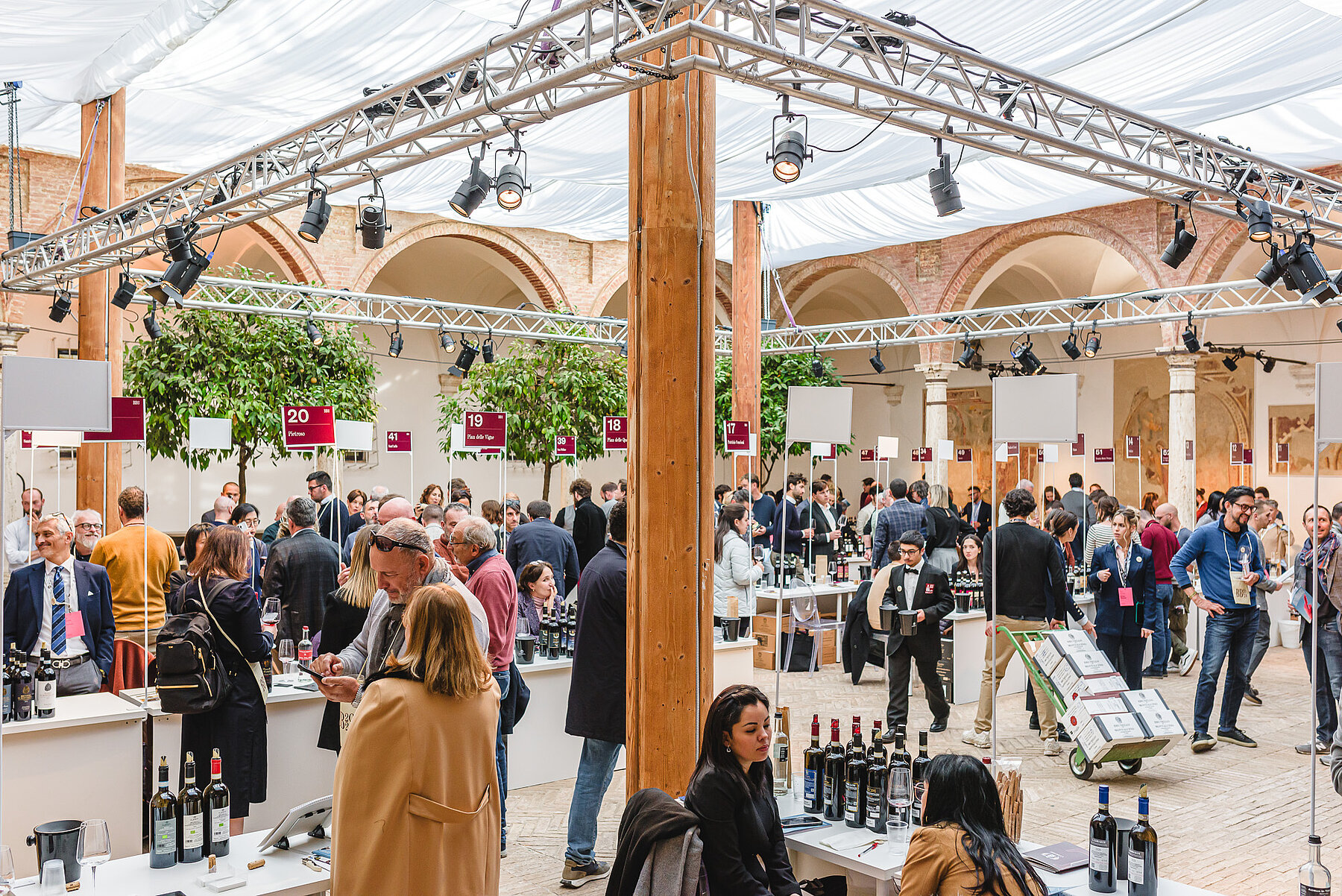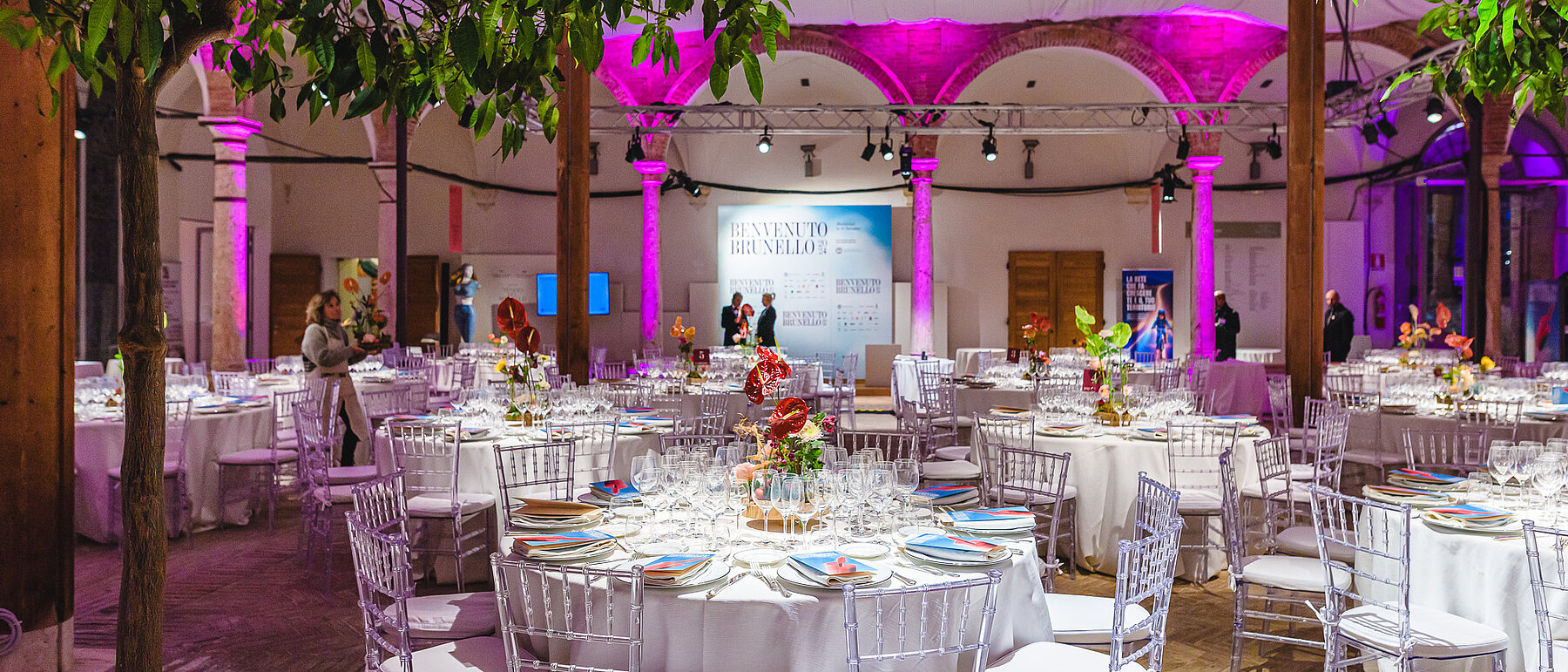
"Benvenuto Brunello" is the annual wine fair in Montalcino, organized by the Consorzio del Vino Brunello di Montalcino, where the latest Brunello di Montalcino wines are presented.
Brunello 2020 - the charming surprise
The pandemic vintage is surprisingly homogeneous and of excellent quality. The 2020 Brunello wines have a wonderful ripeness, with expressive fruit and beguiling charm, but at the same time a good structure with a juicy texture and surprising freshness. Despite the warm vintage, the wines are elegant and not overloaded. The vintage was interpreted well and over-extraction was avoided. Many wines are open and indicate an early drinking maturity. Especially in comparison to the 2019 Riserva, which appear more concentrated and somewhat more compact.
The global pandemic seems to be a ghost from the distant past that we are reluctant to remember. However, when tasting the 2020 Brunello di Montalcino and talking to the winemakers, inevitable references to this bizarre time kept popping up.
Overall, the weather was not extreme, but we remember the very hot summer. There was plenty of rain both in winter and in late May/early June, which shaped the vintage and allowed the vines to grow relatively stress-free on the rolling hills around Montalcino.
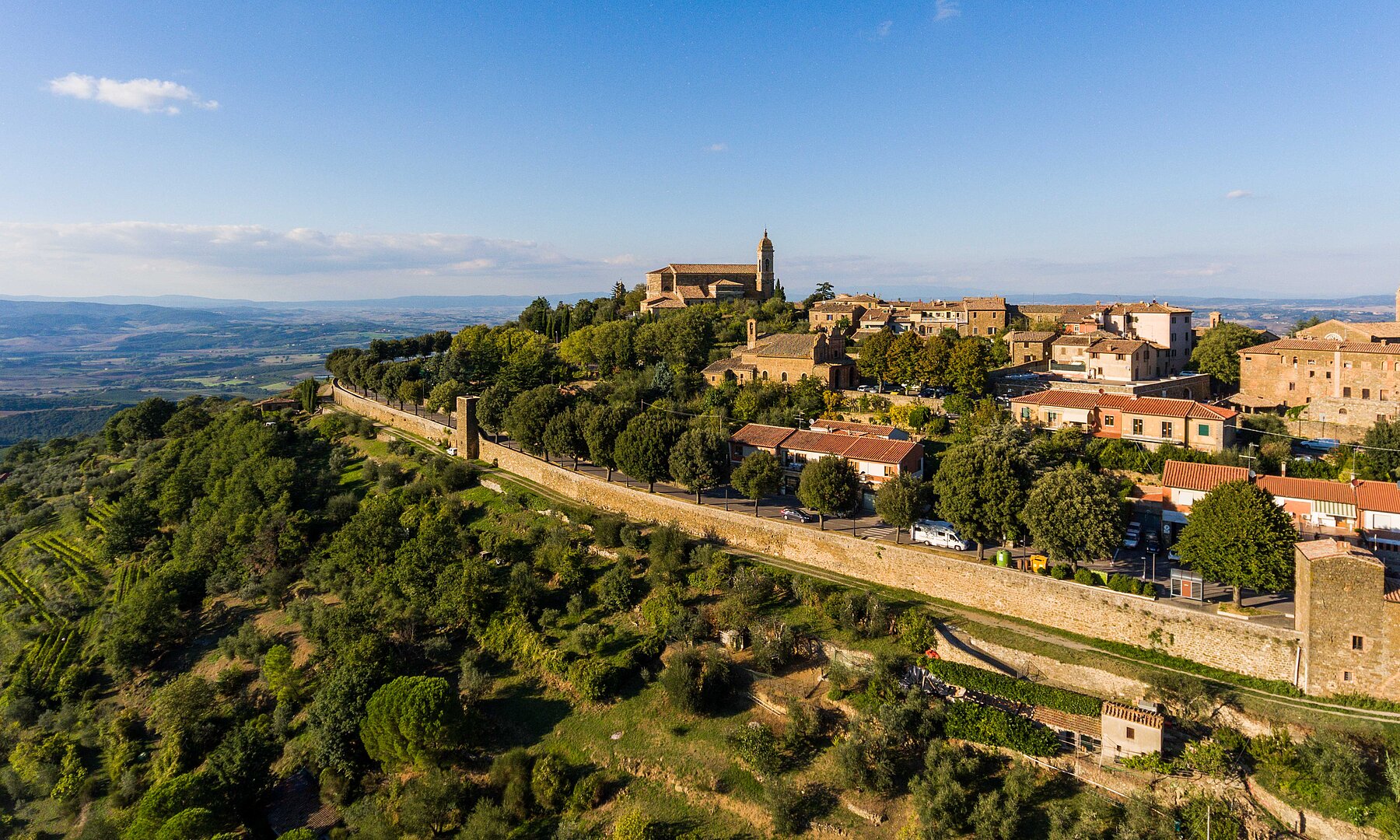
View of the medieval town of Montalcino, surrounded by the rolling hills of Tuscany - home to the famous Brunello vineyards. (© Consorzio del Brunello di Montalcino)
There were mildew problems here and there. These water reserves were also necessary, as it was a very hot summer, which is why the freshness of the wines is surprising. This was partly due to the cool nights, especially in the last few weeks before the harvest, which slowed growth somewhat and made it possible to develop differentiated aromas.
Using the foliage to shade the grapes and protect them from sunburn was a top priority in the vineyard. In the cellar, winemakers resisted the temptation to over-extract the wines - as was often the case in the 2000s. A welcome paradigm shift that shows that the winemakers have understood that less is more.
"The wines are a bit like those from 2015, only with more freshness," confirms Francesco Ripaccioli from Canalicchio di Sopra, which is located on the north-eastern side of the appellation. The winery produces excellent wines, which are also among the best in the appellation this year - including the crus from the famous Montosoli hill.
Initially, the comparison with 2015 was obvious, as many wines indeed showed a similar Mediterranean, generous fleshiness that many 2015s exhibited in their youth (and still do today). However, they are not quite as compact and I find that the tannin management of the 2020s is often better resolved: they are usually sweeter and silkier than comparable wines from 2015, which have a somewhat more porous tannic texture.
I was also reminded of 2016 with its freshness and brightness in some of the wines.
Conclusion: The vintage may not come close to the great 2016s and 2019s, but it is a remarkable vintage with many top wines. The year stands above the straightforward, fresh but also racy 2018 vintage and the powerhouses of the dry 2017 vintage.
What I particularly like about it is the combination of the generous aromas of the ripe Sangiovese fruit with a wonderful juiciness, the wonderful floral and mineral-balsamic notes and, as a counterpoint, the animating freshness and juiciness of the wines. Despite the hot growing season, in which temperatures in August sometimes reached 40 degrees Celsius (five days in a row), the wines are neither jammy nor overloaded, but well-proportioned, radiant, juicy and extremely lively with good balance.
Some Brunello winegrowers attribute this freshness to the night-time fluctuations during the short period of heat, when temperatures dropped to around 25 degrees Celsius in the early morning. Isolated rainfall at the end of August and beginning of September brought relief to the vines and allowed them to grow again. In addition, the north-facing and higher vineyards were less affected by the heat and withstood the drought better.
Of course, Montalcino is not a homogeneous terroir, but a diverse one, mainly due to the different altitudes, exposures and soil conditions.
The northern slopes of Montalcino, with their cooler clay soils, often produce fragrant and elegant wines, while the wines of the southern areas are characterized more by Mediterranean warmth and salty nuances. Together they produce a charming and surprising vintage that has enough structure to age well.
The outperformers: stars, classics and newcomers
Once again, the wines of stars such as Canalicchio di Sopra with an outstanding "La Casaccia" and an equally great Riserva, Salvioni with a great classic, Casanuova delle Cerbaie with a breathtaking Riserva Vigna Montosoli, Casanova di Neri with its Annata and Cru Tenuta Nuova, as well as Poggio di Sotto with an equally great Riserva, to name just the most prominent. The classics Fuligni, Talenti and Le Ragnaie are also among the top wines, some of which shine with their individual vineyards located at altitudes of over 600 meters and owned by the highest and coolest vineyards in Montalcino. These are great fine wines that are still little known here.
TOP climber Giuseppe Gorelli
The top climber in recent years is Giuseppe Gorelli, who has once again brought a great Brunello Annata and Riserva to the bottle, and Giodo, the estate run by consultant Carlo and his daughter Bianca Ferrini, has also long been at the top of the appellation.
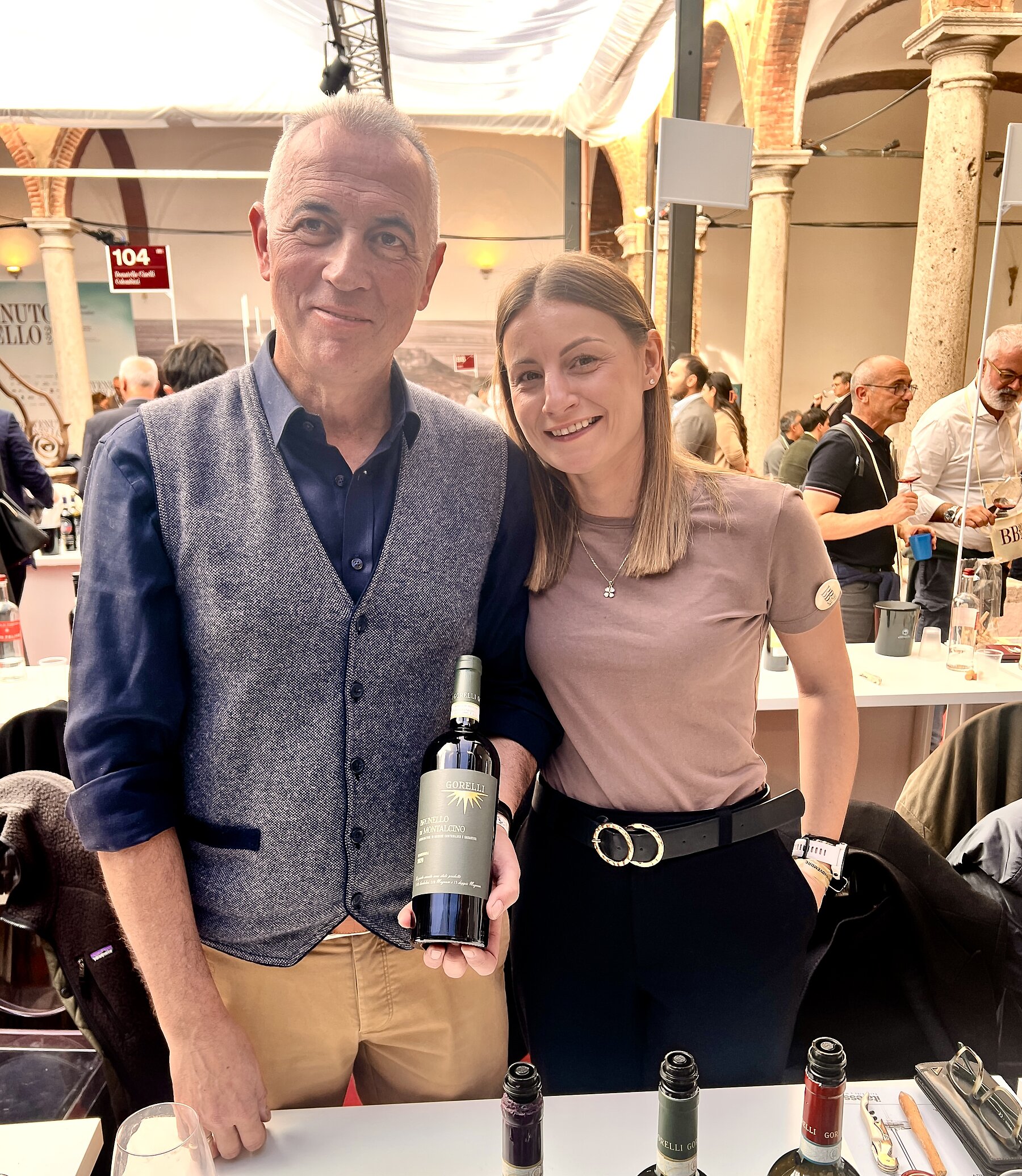
Giuseppe Gorelli with his wife Margherita
The wines from classics such as Argiano, Ciacci Piccolomini d'Aragona, Capanna, Lisini and this time I also liked the wines from Fanti ("Vallochio") and Mastrojanni, where the young oenologist Giulia Härri produces very elegant, precisely contoured and fragrant wines. The wines from Gaja's Brunello vineyard Pieve Santa Restituta (Annata + cru wines Sugarille and Rennina), which I discussed as part of a masterclass I hosted at ProWein, are also among the great classics. I will report separately on this exciting masterclass with a vertical of the two crus. As is so often the case, Col d'Orcia, Caparzo, Caprili, Banfi and Il Poggione offer good value for money.
New evaluation scheme
From Benvenuto Brunello 2024, the best-organized en primeur tasting, there will be a new rating system for the quality of the vintage. The previous stars (1 to 5) have been replaced by a complex system called "Brunello Forma", which evaluates countless geoclimatic data from more than 40 measuring stations spread across the entire production area. The result is a laboratory that is able to examine the harvest results and the characteristics of Sangiovese in the Montalcino area in detail and analyze them according to geological and microclimatic characteristics. In addition, an international team of tasters assesses the quality of the vintage. The conclusion: "Captivating, bright, juicy". It combines generosity with elegance and offers wines that are accessible, but whose tannins also promise interesting developments. So the impressions coincide with my analysis of the vintage.
You will find the best Brunello wines described in detail in the brand new FINE WINE GUIDE database.
Background knowledge: Montalcino's diverse terroir
Altitude, wind, soils
A major differentiating factor with a decisive influence on the quality of the vintage is the altitude and exposure. In Montalcino, Sangiovese grows between 200 and around 600 meters above sea level and the higher the vines are, the later the ripening process takes place, which means that the wines not only taste "brighter" and fresher in color, but also in aroma - often with crisp, red berry fruit reminiscent of raspberry and pomegranate.
The wind also plays a major role: it is regularly windy in Montalcino. This is because the idyllic village is perched on a hill and is therefore exposed to the cool north winds and mild south-westerly sea breeze, which creates the best conditions for the health of the vines. This was a blessing in wetter vintages such as
2018, as the grapes dried out quickly. However, this was only partially successful in the difficult 2023 peronospora vintage.
The soils: Most of Montalcino consists of marl with a more or less active lime content, clayey soils, pietraforte (calcareous sandstone) and, in the more southerly parts, sand. Clayey soils bring body and longevity, sandy soils explosive aromas and lighter tannins, the calcareous shale clay brings minerality and saltiness to the wines.
North and south
And of course you have to keep an eye on the different exposures here too, because Montalcino has four areas and the wines - beyond individual styles and vintage diversity - turn out differently. In principle, Montalcino can be divided into four quadrants: Northeast and Northwest and again the same in the South. In the north, the climate is somewhat harsher and the nights are cooler, which is naturally reflected in the aromas and tannin structure.
Generally speaking, the wines from the north, especially from the north-east on the slopes of the Montosoli hill, are usually more elegant, more grippy and more crystalline in expression. They tend to show crisper red berries such as sour cherry and pomegranate and have a somewhat firmer tannic grip, but sometimes they are also somewhat less ripe and more angular, which requires and enables longer bottle ageing.
To the south, the extinct volcano Monte Amiata stretches upwards, and the Tuscan coast is only 60 km away as the crow flies. This is where the warmer sites are located, where the vines bask in the sun and receive just enough rain to allow sufficient sugar to develop in the fruit. In dry years, however, this can be a challenge.
➜ As a subscriber you will find the tasting notes of the best Brunello wines and Rosso di Montalcino - together with older vintages - in our brand new database with the easiest handling!
